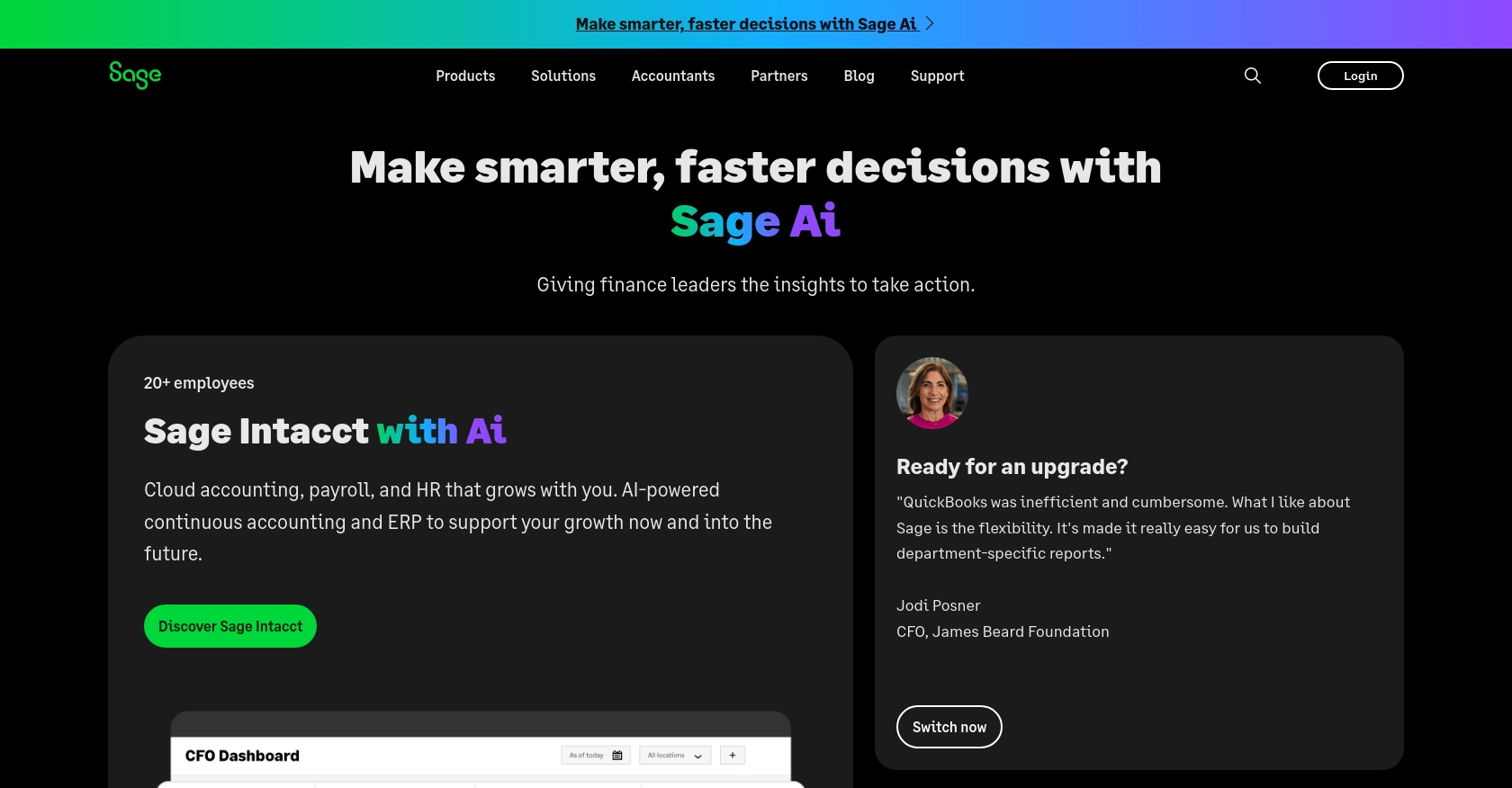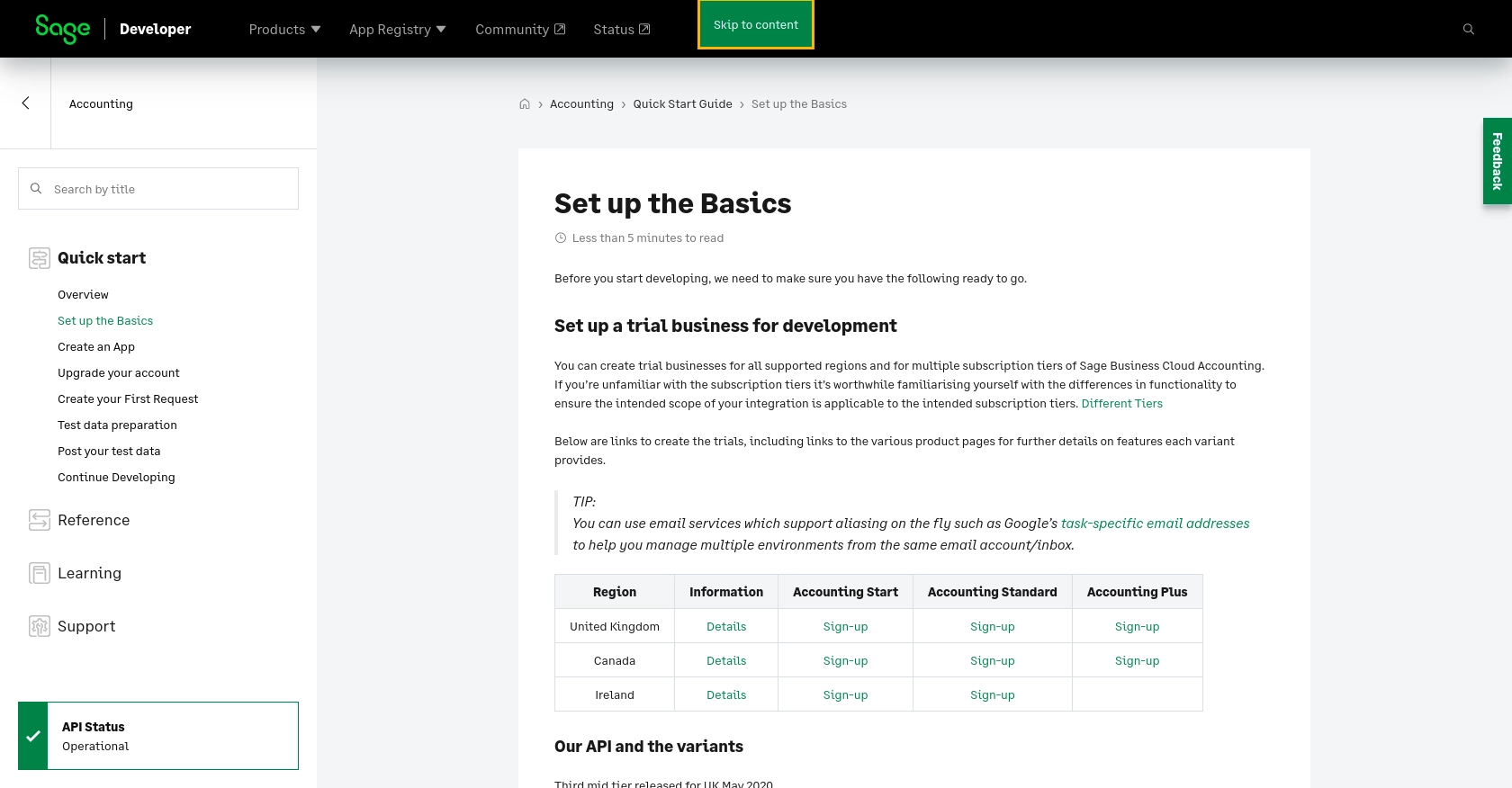Using the Sage Accounting API to Get Sales Invoices in Python

Introduction to Sage Accounting API
Sage Accounting is a robust cloud-based accounting solution tailored for small to medium-sized businesses. It offers a comprehensive suite of tools to manage finances, track expenses, and generate reports, making it an essential platform for businesses aiming to streamline their financial operations.
Integrating with the Sage Accounting API allows developers to automate and enhance financial processes, such as retrieving sales invoices. For example, a developer might use the Sage Accounting API to automatically fetch sales invoices and integrate them into a custom reporting tool, providing real-time insights into sales performance.
Setting Up a Sage Accounting Test/Sandbox Account
Before you can start interacting with the Sage Accounting API, you need to set up a test or sandbox account. This will allow you to safely experiment with API calls without affecting any live data.
Creating a Sage Developer Account
To begin, you'll need a Sage Developer account. This account will enable you to register and manage your applications, obtain client credentials, and specify key details such as callback URLs.
- Visit the Sage Developer website and sign up using your GitHub account or an email address.
- Follow the guide on creating an app to get your Client ID and Client Secret.
Setting Up a Trial Business Account
Next, you need to set up a trial business account for development purposes. Sage offers trial accounts for different regions and subscription tiers.
- Choose the appropriate region and subscription tier from the Sage Developer page.
- Sign up for a trial account using the links provided for your chosen region.
Upgrading to a Developer Account
Once your trial account is ready, you can request an upgrade to a developer account. This upgrade provides 12 months of free access to your Sage Accounting business for testing purposes.
- Submit the upgrade request form with details such as your name, email address, app name, Client ID, and region. More information can be found here.
- Wait for confirmation from the Sage team, which typically takes 3-5 working days.
Creating a Sage App for OAuth Authentication
Since the Sage Accounting API uses OAuth for authentication, you'll need to create an app to obtain the necessary credentials.
- Log in to your Sage Developer account and click on "Create App".
- Enter a name and Callback URL for your app. Optionally, provide an alternative email address and homepage URL.
- Save your app to receive your Client ID and Client Secret, which will be used for OAuth authentication.
With your test account and app set up, you're now ready to start making API calls to Sage Accounting. In the next section, we'll explore how to use Python to interact with the Sage Accounting API and retrieve sales invoices.

sbb-itb-96038d7
Making API Calls to Retrieve Sales Invoices from Sage Accounting Using Python
In this section, we'll guide you through the process of using Python to interact with the Sage Accounting API to retrieve sales invoices. This involves setting up your Python environment, making the API call, and handling the response.
Setting Up Your Python Environment for Sage Accounting API
Before making API calls, ensure you have the following prerequisites installed on your machine:
- Python 3.11.1
- The Python package installer
pip
Once you have these installed, open your terminal or command prompt and install the requests library using the following command:
pip install requestsWriting Python Code to Fetch Sales Invoices from Sage Accounting
Create a file named get_sales_invoices.py and add the following code to it:
import requests
# Set the API endpoint and headers
endpoint = "https://api.sage.com/accounting/v3/sales_invoices"
headers = {
"Authorization": "Bearer Your_Access_Token",
"Content-Type": "application/json"
}
# Make a GET request to the API
response = requests.get(endpoint, headers=headers)
# Check if the request was successful
if response.status_code == 200:
invoices = response.json()
for invoice in invoices['sales_invoices']:
print(invoice)
else:
print(f"Failed to retrieve invoices: {response.status_code} - {response.text}")
Replace Your_Access_Token with the access token obtained during the OAuth authentication process.
Running the Python Script to Retrieve Sales Invoices
Execute the script from your terminal or command line using the following command:
python get_sales_invoices.pyIf successful, you should see the sales invoices printed in your terminal. If there are any errors, the script will output the error code and message.
Verifying API Call Success in Sage Accounting Sandbox
To ensure the API call was successful, log in to your Sage Accounting sandbox account and verify that the sales invoices match the data returned by your script.
Handling Errors and Common Error Codes from Sage Accounting API
When making API calls, it's crucial to handle potential errors gracefully. Common error codes you might encounter include:
- 400 Bad Request: The request was invalid. Check your request parameters.
- 401 Unauthorized: Authentication failed. Verify your access token.
- 404 Not Found: The requested resource could not be found.
- 500 Internal Server Error: An error occurred on the server. Try again later.
For more detailed information on error handling, refer to the Sage Accounting API documentation.

Conclusion and Best Practices for Using Sage Accounting API with Python
Integrating with the Sage Accounting API can significantly enhance your financial management processes by automating tasks such as retrieving sales invoices. By following the steps outlined in this guide, you can efficiently set up your environment, authenticate using OAuth, and make API calls using Python.
Best Practices for Secure and Efficient API Integration
- Secure Storage of Credentials: Always store your Client ID, Client Secret, and access tokens securely. Consider using environment variables or secure vaults to manage sensitive information.
- Handle Rate Limiting: Be mindful of API rate limits to avoid throttling. Implement retry logic with exponential backoff to handle rate limit responses gracefully.
- Data Standardization: Ensure that the data retrieved from the API is standardized and transformed as needed to fit your application's requirements.
- Error Handling: Implement robust error handling to manage different error codes and scenarios, ensuring a smooth user experience.
Streamlining Integrations with Endgrate
While integrating with individual APIs like Sage Accounting can be beneficial, managing multiple integrations can become complex and time-consuming. Endgrate offers a unified API solution that simplifies this process by providing a single endpoint to connect with various platforms, including Sage Accounting.
By leveraging Endgrate, you can save time and resources, allowing you to focus on your core product development. With Endgrate, you build once for each use case, reducing the need for multiple integrations and offering an intuitive experience for your customers.
Explore how Endgrate can transform your integration strategy by visiting Endgrate today.
Read More
- https://endgrate.com/provider/sage
- https://developer.sage.com/accounting/quick-start/set-up-the-basics/
- https://developer.sage.com/accounting/quick-start/create-an-app/
- https://developer.sage.com/accounting/quick-start/upgrade-your-account/
- https://developer.sage.com/accounting/reference/invoicing-sales/
Ready to get started?
